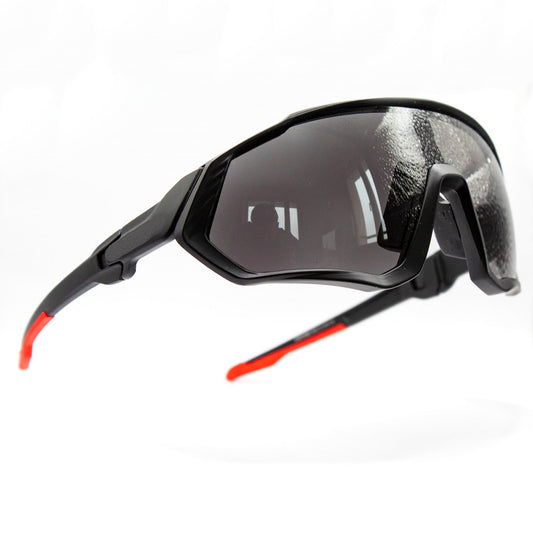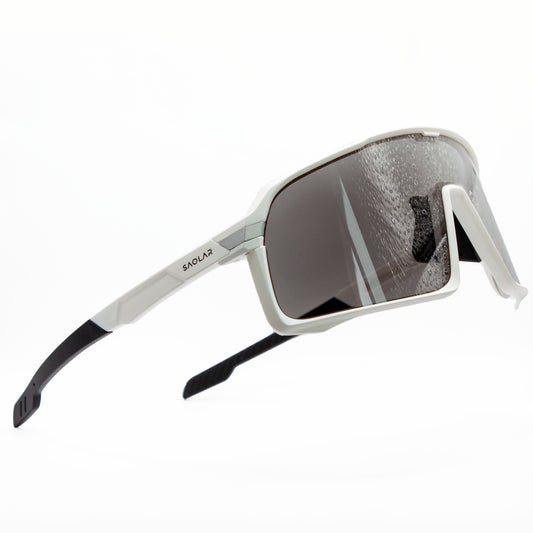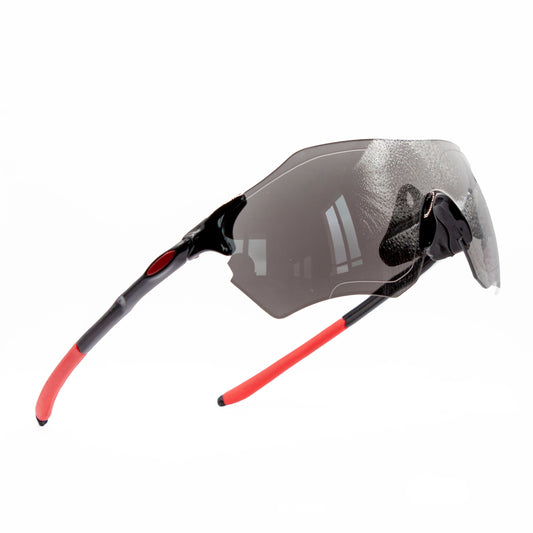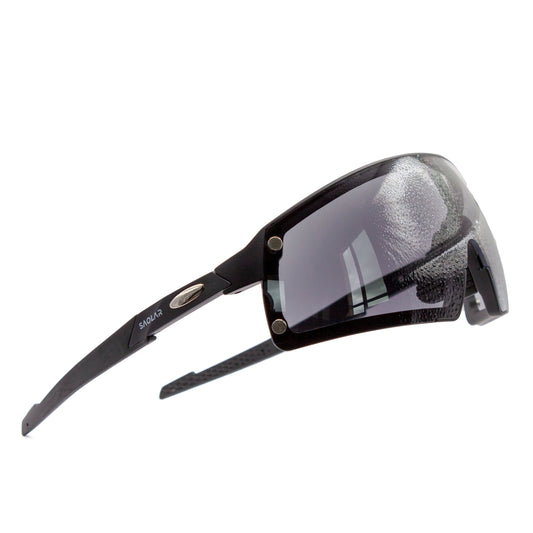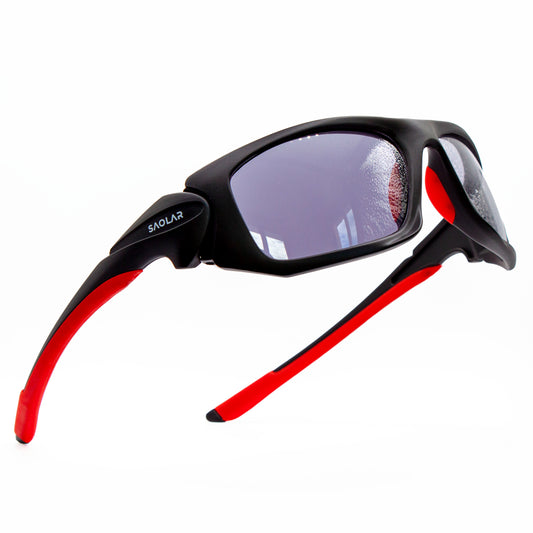Introduction
Mountain biking is more than just a sport—it's a lifelong passion that connects riders with nature, challenges their limits, and fuels a sense of adventure. For many, the joy of tackling rugged trails and experiencing the great outdoors doesn’t fade with age. In fact, it often deepens, as riders discover new ways to appreciate the sport and maintain their health.
Cyclists in their 70s are proving that age is just a number when it comes to hitting the trails. By focusing on fitness, adapting to their body's changing needs, and investing in the right gear, they can continue to thrive and enjoy the physical and mental benefits of mountain biking. From maintaining strength and endurance to reaping the rewards of fresh air and camaraderie, there’s no reason to hang up the helmet just yet.
The Right Gear Makes the Ride
One of the secrets to staying active as a senior mountain biker is using equipment designed for comfort and functionality. For instance, photochromic lenses are a game-changer, ensuring optimal vision in varying light conditions. These lenses adjust automatically, reducing glare and providing clarity on overcast or rainy days. If you’re tackling trails in unpredictable weather, check out Best Photochromic Lenses for Rainy Cycling to discover how these advanced lenses can enhance your riding experience.
A Sport for All Ages
Mountain biking into your 70s isn’t just about staying physically fit; it’s about embracing the adventure, connecting with like-minded riders, and continuing to push boundaries. By adopting smart strategies and leveraging tailored gear, senior riders can enjoy every twist and turn on the trail.
Whether you’re a seasoned cyclist or rediscovering the joy of riding, mountain biking offers a fulfilling way to stay active and engaged at any age. Cycling tips for older riders include adapting your approach and finding tools that make every ride enjoyable, no matter the terrain or conditions.
Invest in the Right Gear for Senior Riders
As you continue mountain biking into your 70s, the right gear becomes crucial for ensuring both comfort and safety on the trails. Investing in senior mountain biking gear tailored to your needs can make every ride smoother, more enjoyable, and less taxing on your body.
Prioritizing Comfort and Ergonomics
The first step is choosing equipment designed with seniors in mind. Lightweight bikes reduce strain on your joints and muscles, making climbs and long rides easier. Opt for models with adjustable handlebars and seats to ensure proper posture and minimize back discomfort. A comfortable saddle is also essential, as it reduces pressure points and helps prevent fatigue during extended rides.
For protection against changing weather, layering with breathable, moisture-wicking clothing is a smart choice. Don’t overlook your footwear—stiff-soled cycling shoes provide better power transfer and support, especially during uphill climbs.
Enhance Visibility with Photochromic Lenses
Good vision is non-negotiable for safe mountain biking, especially as trail conditions can change rapidly. Photochromic lenses for cycling are a game-changer, offering seamless adaptation to varying light conditions. These lenses automatically adjust from clear to dark, ensuring excellent visibility in sunny, overcast, or rainy weather.
For riders dealing with glare or low-light environments, these lenses enhance clarity, protect against harmful UV rays, and reduce eye strain. Check out Best Photochromic Lenses for Rainy Cycling to learn how they can improve your experience on unpredictable trails.
The Safety Advantage
Senior riders should also invest in high-quality helmets with enhanced cushioning and adjustable straps for a secure fit. Consider adding knee and elbow pads for extra protection during technical descents or accidental falls.
By prioritizing comfort, functionality, and safety, senior mountain biking gear ensures that you can enjoy every ride, tackle challenging terrains, and stay active for years to come.
Focus on Fitness and Recovery
Staying fit and maintaining proper recovery routines are essential for mountain biking into your 70s. By incorporating tailored fitness strategies like HIIT for older cyclists and prioritizing recovery, you can continue to enjoy the sport while reducing the risk of injury or burnout.
Embrace Tailored Fitness: HIIT for Older Cyclists
High-Intensity Interval Training (HIIT) is an excellent way for senior cyclists to maintain cardiovascular health and muscle strength. HIIT involves alternating short bursts of intense activity with recovery periods, making it adaptable to your fitness level. For example, a short, uphill sprint followed by a gentle downhill ride can mimic natural intervals while keeping your heart rate elevated.
The benefits of HIIT include improved stamina, increased fat burning, and better overall conditioning—all crucial for tackling tough trails. Start small with intervals that last 20-30 seconds, gradually increasing intensity as your endurance improves.
For e-bike users, HIIT can be incorporated by toggling between assisted and non-assisted pedaling. Check out Top Tips to Maximize E-Bike Range & Battery Life for strategies to optimize your e-bike’s performance during intense workouts.
Recovery for Senior Riders
Proper recovery is just as important as training. As you age, your body requires more time to repair and rebuild after physical activity. Listen to your body—if you’re feeling fatigued or experiencing joint discomfort, take an extra rest day or opt for light activities like yoga or walking.
Good nutrition is also key to recovery. Focus on protein-rich meals to support muscle repair and include anti-inflammatory foods like leafy greens, nuts, and fish to protect your joints. Staying hydrated is vital, particularly after high-intensity rides.
By incorporating HIIT for older cyclists into your fitness routine and prioritizing recovery for senior riders, you’ll stay strong, healthy, and ready to conquer the trails well into your 70s and beyond.
Leverage Technology: E-Bikes for the Win
For cyclists in their 70s, e-bikes for seniors are transforming the mountain biking experience. These powerful machines provide the extra assistance needed to tackle steep climbs and cover longer distances, allowing older riders to stay active and adventurous without overexerting themselves. By integrating electric mountain biking for older riders into your routine, you can extend your riding years and enjoy the sport at your own pace.
Why E-Bikes Are Ideal for Seniors
E-bikes offer several advantages for senior riders, including adjustable power settings that let you customize the level of assistance. Whether you’re riding uphill or navigating flat trails, you can control how much effort is required, making mountain biking more accessible and enjoyable.
In addition to physical benefits, e-bikes provide a mental boost, helping riders feel empowered and capable. With the ability to cover more ground, you can explore new trails and revisit familiar ones with confidence.
Tips for Maintaining Battery Life
To get the most out of your e-bike, it’s essential to manage battery life effectively. Start by using the appropriate power settings based on the terrain—lower assistance for flat stretches and higher for challenging climbs.
When planning longer rides, charge your battery fully and carry a spare if possible. Avoid sudden power bursts, as these can drain the battery quickly. For more in-depth advice on battery optimization and safety, explore Master Electric Mountain Biking: Essential Tips for Power & Safety.
Safety Considerations
While e-bikes are a game-changer, safety remains paramount. Ensure your bike is well-maintained, and invest in reliable brakes and sturdy tires. Adjust your speed to match your comfort level and trail conditions, especially on descents.
By embracing e-bikes for seniors and following these tips, electric mountain biking for older riders becomes a safe, efficient, and incredibly rewarding way to stay active on the trails.
Mental and Emotional Benefits of Cycling at Any Age
Cycling offers more than just physical rewards—it’s a powerful tool for mental well-being, especially for riders in their 70s. Whether you’re taking a solo ride through scenic trails or joining a group of fellow enthusiasts, the mental health benefits of cycling are undeniable. From reducing stress to fostering social connections, cycling can help combat age-related challenges and keep your mind sharp.
Cycling as Therapy for Seniors
For many seniors, cycling becomes a form of therapy that nurtures mental and emotional health. The rhythmic motion of pedaling and the focus required to navigate trails create a meditative experience that reduces stress and anxiety. Additionally, cycling promotes the release of endorphins—your body’s natural mood boosters—which can improve overall happiness and combat feelings of isolation or depression.
Cycling also enhances cognitive function by increasing blood flow to the brain. This can help seniors maintain focus, memory, and decision-making skills as they age. To learn more about the science behind these benefits, check out What Are the Mental Health Benefits of Commuting by Bike.
The Social Aspect: Staying Connected
Staying socially active is vital for emotional well-being, and cycling provides the perfect opportunity to connect with others. Joining group rides, participating in local cycling clubs, or even sharing trail tips with other riders can foster a sense of community. These connections can reduce feelings of loneliness and provide motivation to stay active.
If you’re not part of a cycling group, consider organizing regular meetups with friends or family. Shared rides can strengthen bonds while keeping everyone physically active and mentally engaged.
A Lifelong Source of Fulfillment
By embracing cycling as therapy for seniors, you’re not just staying fit—you’re investing in a healthier, happier, and more connected life. Whether you ride for relaxation, adventure, or camaraderie, the mental health benefits of cycling are a compelling reason to keep pedaling well into your 70s and beyond.
Stay Safe on the Trails
Safety is paramount for riders of any age, but it becomes even more critical as you continue mountain biking into your 70s. By understanding trail conditions, preparing for potential challenges, and adopting proactive safety measures, you can confidently enjoy the ride. These mountain biking safety tips will help you stay protected and make the most of every adventure.
Assess Trail Difficulty Before You Ride
Choosing trails that match your skill level is crucial for trail safety for senior riders. Start by researching trail ratings and reviews, which often indicate difficulty levels, elevation changes, and technical features. Green-rated trails are generally the easiest, while blue and black trails may require advanced skills.
Take note of trail length and weather conditions. Wet or muddy trails can be particularly hazardous, even for experienced riders. If you’re trying a new trail, start slow to familiarize yourself with its terrain and challenges.
Manage Risks with Proper Preparation
Preparation is the cornerstone of safety. Before heading out, perform a pre-ride inspection of your bike, checking tire pressure, brakes, and chain function. Carry essential safety gear, including a helmet, gloves, and a small toolkit for on-the-go repairs.
Another important step is letting someone know your route and expected return time. This simple measure ensures someone can alert authorities if you encounter difficulties.
First Aid Knowledge is Essential
Accidents can happen, even on familiar trails. Basic first aid knowledge is a valuable skill for trail safety for senior riders. Learn how to treat minor cuts and sprains, and always carry a small first aid kit. Familiarity with CPR and emergency response techniques can be lifesaving in critical situations.
Conclusion
By following these mountain biking safety tips, you can minimize risks and focus on enjoying your time on the trails. Preparation, awareness, and the right mindset are your keys to staying safe and thriving on every ride.
FAQ Section
Q1: Is mountain biking safe for seniors in their 70s?
Yes, mountain biking is safe for seniors with the right precautions. Choosing trails that match your skill level is essential for minimizing risks. Start with beginner-friendly trails, and avoid overly technical routes unless you feel confident in your abilities.
Investing in safety gear like helmets, gloves, and padded shorts can also prevent injuries and increase your comfort on longer rides. Lightweight bikes and accessories designed for seniors add further protection and ease. For added safety, always inform someone about your route and carry a first aid kit.
Q2: Are e-bikes suitable for older mountain bikers?
Absolutely! E-bikes for seniors are a fantastic option to make mountain biking more accessible and enjoyable. They provide pedal assistance, reducing the physical strain of challenging climbs and long distances. E-bikes also allow riders to stay active without overexertion, making them ideal for maintaining fitness.
To maximize their benefits, ensure proper battery management and maintenance. For more tips, check out Master Electric Mountain Biking: Essential Tips for Power & Safety.
Q3: How does cycling benefit mental health for seniors?
Cycling offers numerous mental health benefits for seniors, including stress reduction, improved mood, and enhanced cognitive function. The physical activity releases endorphins, promoting a sense of well-being, while the meditative rhythm of pedaling helps clear the mind.
Group rides can also combat feelings of isolation by fostering social connections. For an in-depth look, read What Are the Mental Health Benefits of Commuting by Bike.
Q4: What type of lenses are best for mountain biking as a senior?
Photochromic lenses are the best choice for senior mountain bikers. These lenses automatically adjust to changing light conditions, offering clear vision in both bright and low-light environments. They also reduce glare and protect against harmful UV rays.
For detailed recommendations, explore Best Photochromic Lenses for Rainy Cycling.
Q5: How can I increase my endurance for mountain biking at 70?
Improving endurance involves a combination of tailored fitness routines and proper recovery. Incorporate HIIT for older cyclists, focusing on short bursts of intense activity followed by rest. This boosts stamina and cardiovascular health efficiently.
Equally important is recovery—allow your body ample time to heal and fuel it with nutritious, protein-rich meals. Light activities like yoga or walking can aid in active recovery. For more insights, revisit tips on fitness and recovery shared in the earlier sections.
Conclusion
Mountain biking is a lifelong journey filled with adventure, fitness, and personal fulfillment. For riders in their 70s, the sport remains a powerful way to stay connected to nature, maintain physical health, and boost mental well-being. By following these senior mountain biking tips, you can continue enjoying the trails and reaping the rewards of an active lifestyle.
Staying Active as an Older Cyclist
The key to staying active as an older cyclist is adapting your approach to meet the unique needs of your body. Whether it’s through tailored fitness routines like HIIT, smart recovery practices, or embracing innovative tools like e-bikes, there’s no shortage of ways to thrive on the trails. Selecting the right gear, such as lightweight bikes and photochromic lenses, adds an extra layer of comfort and safety, making every ride enjoyable and stress-free.
Mountain biking also nurtures your mental health by reducing stress, boosting mood, and keeping you socially engaged. Joining group rides or clubs can foster meaningful connections, while solo rides provide a peaceful escape. It’s not just about the physical benefits—it’s about embracing the joy of the ride.
Explore SAOLAR for Enhanced Riding Experiences
For riders looking to elevate their experience, SAOLAR offers a range of products designed to meet the needs of cyclists at any age. From photochromic lenses that adapt to changing light conditions to high-quality cycling gear, SAOLAR has everything you need to ride with confidence. Learn more about enhancing your cycling adventures by visiting resources like Best Photochromic Lenses for Rainy Cycling.
No matter your age, mountain biking is a sport that can evolve with you. By incorporating these senior mountain biking tips and exploring innovative products, you’ll be well-equipped to enjoy the thrill of the trail for years to come.



